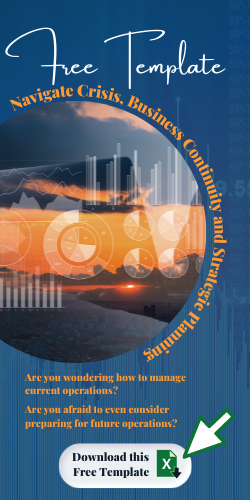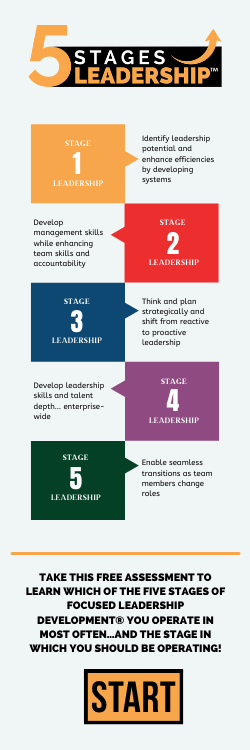It happens frequently. It happens with C-Suite executives as well as with mid-level managers. It happens when the excitement of DOING things to transform the organization takes hold. ‘It’ is when the strategic planning team focuses more on what they’re going to DO instead of what they want to ACHIEVE. It is when they stop thinking strategically. It causes teams to create laundry lists instead of strategic plans.
…when the strategic planning team focuses more on what they’re going to DO instead of what they want to ACHIEVE… they stop thinking strategically…and [they] create laundry lists instead of strategic plans.
Contrary to most consultants and publications on the use of the terms ‘objectives’ and ‘goals’, when I work with clients on strategic planning, I’m very clear in how these terms are used – AND – I use them differently than many. I put myself in the executives’ shoes who will be held accountable for the plan’s implementation or lack thereof. If I were in their shoes, I’d want as much clarity as possible as to WHAT should be expected of me and my team by the end of the planning timeframe, and I’d like my team to be clear WHAT – specifically – is expected of them and me each year. Also, if there’s pushback from the board, customers, or others on an initiative we’re implementing from the plan, we’ve been upfront with our intentions.
Because of this, some of the first framework pieces we create in a client’s strategic plan are their strategic priorities or strategic objectives. Some clients prefer to call them strategic priorities and some prefer strategic objectives. I don’t care. What I do care about is that they serve as the core focusing themes of the plan. This is where the client identifies WHAT they need to or want to accomplish over the next 3+ years. The strategic objectives are the outcomes they’re looking to achieve that are tangibly different than the way things are at present.
The strategic objectives are the outcomes they’re looking to achieve that are tangibly different than the way things are at present.
I typically try to limit the number of strategic objectives we create to no more than five. For my clients, implementing a strategic plan effectively, over and above daily operations is a heavy lift. Therefore, the plans need to be focused, limited, and tight. Even with every one of my clients being different and spanning various industries in the private and public sectors, the strategic objectives often focus on these common themes:
- Enhanced talent and leadership attraction, development and retention
- Enhanced process and system efficiencies for better team and customer experiences
- Improved margins and financial performance to enable growth
- Refined, customer-centric product and service offerings and delivery
- Enhanced internal and external communications that support the culture and brand
With these or other forward-focused objectives in mind, the planning team then needs to get more clear on HOW they’re going to make these objectives or priorities a reality. That’s where S.M.A.R.T. Goal setting comes into play. S.M.A.R.T. is the oldie-but-goodie technique for minimizing confusion in goal-setting.
- ‘S’ stands for ‘Specific’. In that the goal is clear in what needs to be accomplished and by when. It is not open to interpretation.
- ‘M’ stands for ‘Measurable’. The goal needs to be written in such a way that it’s clear on how progress towards or away from goal completion can be tracked.
- ‘A’ stands for ‘Action Oriented’. The goal is written to describe actions the team can take. The team is not dependent upon someone else taking action.
- ‘R’ stands for ‘Relevant’. The goal is relevant to helping the plan move forward.
- ‘T’ stands for ‘Timebound’. The goal has a clear due date which enables the team to plan for it, budget for it, allocate resources to it, and sequence it properly with other activities.
Because S.M.A.R.T. goals provide so much specificity and clarity, they are powerful management tools in helping to plan month-by-month, quarter-by-quarter, and year-by-year. This is why, unlike most others, I call these specific action steps within strategic plans ‘Goals’ and not ‘Objectives’. S.M.A.R.T. goals require action and are time sensitive. They help leaders visualize and develop the plans, and they help managers implement the plans systematically. Goals clarify what the team has to DO and BY WHEN so the rest of the plan can flow – as planned. Objectives clarify WHAT and WHY the action steps are being taken in the first place. What outcome is expected?
Goals clarify what the team has to DO and BY WHEN so the rest of the plan can flow – as planned. Objectives clarify WHAT and WHY the action steps are being taken in the first place. What outcome is expected?
As you develop your next strategic plan, don’t simply create laundry lists of much-needed action items. Keep in mind, your plan first needs to clarify your objectives of WHAT you hope to be, achieve or do differently in the future and WHY, and then develop your goals to outline HOW you’re going to make those objectives a reality. If you put things in this order, you know WHAT you have to do, WHY, and HOW it’s going to get done.
Copyright MMXXII – Liz Weber, CMC, CSP – Weber Business Services, LLC – www.WBSLLC.com +1.717.597.8890
Liz supports clients with strategic and succession planning, as well as, executive coaching and leadership training.
Liz supports clients with strategic and succession planning, as well as leadership training and executive coaching. Learn more about Liz on LinkedIn!

























